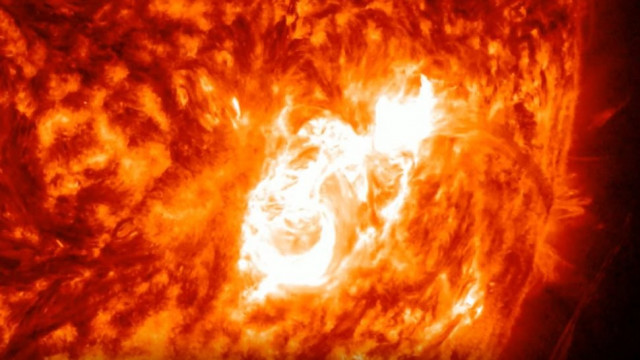Sun unleashes powerful X-class solar flare, causes radio blackouts in Asia-Pacific
Recent X-class flare causes radio issues but no geomagnetic storm, says solar physicist.

The sun silenced critics of its recent inactivity with an explosive X-class flare, the most powerful class of solar flare, causing shortwave radio blackouts across Australia, Southeast Asia, and Japan.
The flare, originating from sunspot AR3738, occurred late Saturday night at 10:34 p.m. EDT (0234 UT on July 14), as captured by NASA's Solar Dynamics Observatory.
Despite the flare's intensity, it did not produce a coronal mass ejection (CME) – a large expulsion of plasma and magnetic field from the sun – dashing the hopes of aurora chasers. Solar physicist Keith Strong noted on social media platform X, "There is unlikely to be any geomagnetic activity as a result of the high solar activity."
The flare did, however, cause radio blackouts shortly after the eruption. These disruptions are common following powerful solar flares due to the intense bursts of X-rays and extreme ultraviolet radiation emitted during such events.

Shortwave radio blackouts across Southeast Asia, Australia and Japan. Image credit: NOAA
The radiation from solar flares travels to Earth at the speed of light, ionising the upper atmosphere upon arrival. This ionisation creates a denser environment for high-frequency shortwave radio signals, which are used for long-distance communication. As radio waves interact with electrons in the ionised layers, they lose energy due to increased collisions, degrading or completely absorbing the radio signals.
Solar flares, eruptions from the sun's surface, release powerful bursts of electromagnetic radiation. These flares occur when magnetic energy built up in the solar atmosphere is released. They are categorised by size into different classes, with X-class flares being the strongest. M-class flares are 10 times less powerful than X-class flares, followed by C-class flares, which are 10 times weaker than M-class flares. B-class flares are 10 times weaker than C-class flares, and A-class flares are 10 times weaker than B-class flares, having no noticeable consequences on Earth. Within each class, numbers from 1-10 (and beyond for X-class flares) describe a flare's relative strength.
The recent solar flare on July 14 was recorded as an X-1.27, according to Space Weather Live.



















COMMENTS
Comments are moderated and generally will be posted if they are on-topic and not abusive.
For more information, please see our Comments FAQ